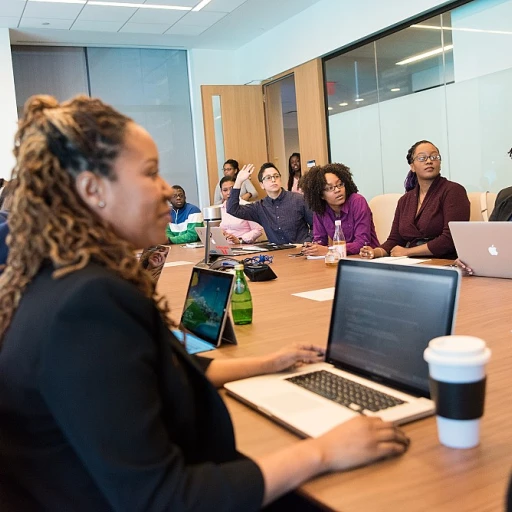
Understanding the Role of a Chief Human Resources Officer
Decoding the Chief Human Resources Officer Role
The position of Chief Human Resources Officer (CHRO) has evolved significantly in recent years, often encompassing a variety of responsibilities that are dynamic and multifaceted. As the head of the workforce management department, the CHRO plays a crucial strategic role in influencing high-level decisions within a company, facilitating workforce solutions, and driving organizational growth. Those pursuing a career in human resources leadership must understand that the scope of this role goes beyond traditional HR functions.
The primary duty of a CHRO is to develop and implement personnel policies that align with a company’s strategic goals. This includes facilitating workforce development and training initiatives that are tailored to improve the competencies and skills of employees, thereby fostering a competitive status in the market. The CHRO ensures that talent acquisition processes are streamlined to attract the right candidates, offering enticing job opportunities that resonate with potential job seekers.
Beyond recruitment, a CHRO must focus on workforce solutions that anticipate the needs of a dynamic workforce. This involves evaluating team dynamics and implementing developmental training programs that enhance individual capabilities while building stronger teams. The CHRO also plays a critical role in fostering a culture that emphasizes customer service excellence, ensuring that customer-facing employees deliver extreme customer satisfaction consistently.
Furthermore, the CHRO leads initiatives to implement flexible work policies and navigate the challenges that come with dynamic work environments. As the field of HR continues to evolve, keeping up with trends such as the integration of technology in workforce management becomes essential. CHROs must seamlessly blend these innovations into their organizational practices to enhance productivity and drive long-term success.
Overall, the journey to becoming a CHRO is a commitment to continuous professional development and understanding the complexities of a fast-paced business environment. For those exploring a career in human resources, appreciating the influential nature and responsibilities of this role is a step toward making impactful contributions to any organization.
The Importance of Dynamic Work Solutions
Embracing the Shift to a Flexible Work Environment
The landscape of workforce management is changing, and with it, the role of the chief human resources officer evolves too. One of the cornerstones of modern HR strategy is the implementation of dynamic work solutions that cater to individuals across varying professions. Companies today recognize that a one-size-fits-all approach no longer holds in a fast-paced world.
To facilitate this shift, organizations must focus on employee-centric models that offer the flexibility required to navigate today’s complexities. The transition towards a life dynamic workforce means developing policies that accommodate diverse employee needs while fostering a culture of agility and adaptability. Work policies dictated by rigid schedules are being replaced by more dynamic structures—providing opportunities for job seekers to find roles that suit their lifestyles.
Nurturing a dynamic workforce also requires investment in workforce development and training programs, ensuring employees are equipped with the skills to thrive. This is crucial in helping them build stronger career paths in today’s environment and preparing them for roles they’ll play in the company's success story.
Role of Customer Experience and Service Orientation
Prioritizing a customer-first approach can enhance both internal efficiency and external appeal. Companies are now increasingly focused on extreme customer service excellence, recognizing that happy employees tend to deliver exceptional service. This philosophy strengthens connections and opens new job opportunities by offering better service to people and customers.
To support such initiatives, companies need robust workforce solutions that help connect the dots between talent acquisition and delivering on customer promises. Implementing cutting-edge solutions not only addresses routine operational challenges but also anticipates potential hurdles in maintaining long-term productivity within a dynamic organizational framework.
For those embarking on this journey, understanding the role of a change agent in HR leadership is vital. Embedding these practices aligns broader organizational goals with employee aspirations, ensuring a harmonious and productive work environment. Further insights can be explored in this comprehensive guide.
Implementing Flexible Work Policies
Implementing flexible work policies is becoming increasingly popular, with companies recognizing the need to adapt to the dynamic nature of today's work environment. By offering a variety of workforce solutions, organizations can attract and retain top talent while enhancing overall employee satisfaction. Here, we'll explore how flexible work policies can be effectively implemented to support a dynamic workforce.
Creating a Balanced Approach
It is essential for human resources teams to develop a balanced approach that addresses both the needs of the organization and its employees. This begins with understanding the specific goals and challenges faced by your team. By targeting workforce development and offering tailored solutions, you can ensure that your team members feel valued and supported in their career journey.
A great example of creating a balanced approach is offering flexible hours, remote work opportunities, or compressed workweeks. These strategies can provide employees with greater control over their schedules, leading to increased job satisfaction and long-term commitment to the organization.
Fostering a Culture of Trust
To effectively implement flexible work policies, companies need to foster a culture of trust and open communication. Encourage team members to voice their needs and concerns, and listen actively to their feedback. Providing training and development opportunities can also help individuals thrive in a fast-paced and life-dynamic work environment. Consider collaborating with a works institute or job corps to support your workforce's ongoing development.
Leveraging Technology and Tools
Technology plays a crucial role in supporting flexible work policies. By utilizing digital platforms and tools, organizations can monitor performance, facilitate communication, and manage tasks more efficiently. Embrace tools that help connect team members and customers alike, ensuring that everyone stays informed and engaged.
For more insights on enhancing workforce agility, check out this article on talent mobility.
Leveraging Technology for Workforce Management
Embracing Technology for Effective Workforce Management
In today's fast-paced and ever-evolving work environments, leveraging technology has become crucial for effective workforce management. As organizations strive to build stronger teams and offer dynamic workforce solutions, the role of technology cannot be overstated. It not only aids in streamlining processes but also enhances the overall employee experience.
One of the primary ways technology aids in workforce management is through advanced talent acquisition platforms. These platforms help connect job seekers with job opportunities that align with their skills and career aspirations. By utilizing data-driven insights, companies can make informed decisions about hiring, ensuring they select individuals who are the best fit for their dynamic work environments.
Moreover, technology facilitates workforce development by offering training programs that are accessible and adaptable. Online training modules and virtual workshops provide employees with the opportunity to enhance their skills at their own pace, fostering a culture of continuous learning and development. This is particularly beneficial in a life dynamic where job roles and responsibilities are constantly evolving.
Another critical aspect is the use of technology in managing flexible work policies. Tools that enable remote work, such as collaboration platforms and project management software, allow teams to maintain productivity and communication regardless of their physical location. This not only supports a dynamic workforce but also caters to the needs of individuals seeking a better work-life balance.
Furthermore, technology plays a pivotal role in customer service by providing solutions that enhance the customer experience. Automated systems and AI-driven tools can handle routine inquiries, allowing human resources to focus on more complex issues that require a personal touch. This integration of technology ensures that customer service remains efficient and effective, even in a fast-paced environment.
In conclusion, the strategic use of technology in workforce management is essential for organizations looking to thrive in today's competitive landscape. By embracing technological advancements, companies can offer innovative solutions that not only meet the needs of their employees but also drive long-term success.
Navigating Challenges in Dynamic Work Environments
Overcoming Obstacles in a Dynamic Workforce
In the fast-paced world of human resources, navigating the challenges of a dynamic work environment is crucial for success. As organizations strive to implement flexible work policies and leverage technology for workforce management, they encounter several obstacles that require strategic solutions.
Adapting to Workforce Changes
One of the primary challenges is adapting to the ever-evolving workforce. With the rise of remote work and the gig economy, HR leaders must develop strategies that accommodate diverse work arrangements. This involves creating opportunities for workforce development and ensuring that training programs are accessible to all employees, regardless of their location.
Maintaining Employee Engagement
Another significant challenge is maintaining employee engagement in a life dynamic environment. As teams become more dispersed, fostering a sense of connection and belonging becomes essential. HR professionals must focus on building stronger relationships within teams and providing support through development training and career opportunities.
Balancing Technology and Human Interaction
While technology plays a vital role in workforce solutions, it is important to balance digital tools with human interaction. HR leaders must ensure that technology enhances, rather than replaces, personal connections. This balance is crucial for delivering exceptional customer service and supporting individuals in their career development.
Addressing Skills Gaps
As industries evolve, skills gaps can pose a significant challenge. HR leaders need to identify these gaps and implement targeted training programs to equip employees with the necessary skills for their jobs. By doing so, they help connect job seekers with job opportunities and support long-term career growth.
Embracing Change
Finally, embracing change is essential for navigating the complexities of dynamic work environments. HR leaders must be proactive in identifying potential challenges and developing innovative solutions to address them. By doing so, they can create a resilient workforce that is prepared to thrive in any situation.
Future Trends in Human Resources Leadership
Emerging Trends in HR Leadership
As the landscape of human resources continues to evolve, the role of a Chief Human Resources Officer (CHRO) is becoming increasingly dynamic and multifaceted. The future of HR leadership is shaped by several key trends that are transforming how organizations manage their workforce and develop talent.
Emphasis on Workforce Development and Training
One of the most significant trends is the growing emphasis on workforce development and training. As job seekers demand more from their careers, CHROs are tasked with creating opportunities for skill development and career advancement. This involves implementing comprehensive training programs that cater to the diverse needs of individuals within the organization. By focusing on workforce solutions that prioritize development, companies can build stronger teams and foster long-term growth.
Adapting to a Fast-Paced, Dynamic Work Environment
In today's fast-paced world, the ability to adapt to change is crucial. CHROs must navigate the challenges of a dynamic work environment by implementing flexible work policies and leveraging technology to enhance workforce management. This includes embracing remote work solutions and utilizing digital tools to streamline operations and improve communication within teams.
Enhancing Customer Service and Employee Experience
Another emerging trend is the focus on enhancing customer service and the overall employee experience. CHROs are increasingly recognizing the importance of creating a positive work environment that supports employee well-being and satisfaction. By prioritizing extreme customer service and fostering a culture of inclusivity, organizations can attract and retain top talent, ultimately leading to improved performance and job satisfaction.
Leveraging Technology for Talent Acquisition
Technology continues to play a pivotal role in HR leadership, particularly in the realm of talent acquisition. CHROs are utilizing advanced tools and platforms to streamline the recruitment process and connect with potential candidates more effectively. By harnessing the power of technology, organizations can identify and attract the right talent to join their teams, ensuring they remain competitive in the ever-changing job market.
Building Stronger Connections and Networks
Finally, the future of HR leadership involves building stronger connections and networks both within and outside the organization. CHROs are focusing on creating partnerships and collaborations that enhance workforce solutions and provide new job opportunities. By fostering a culture of collaboration and open communication, organizations can create a more dynamic and resilient workforce that is prepared to meet the challenges of the future.












